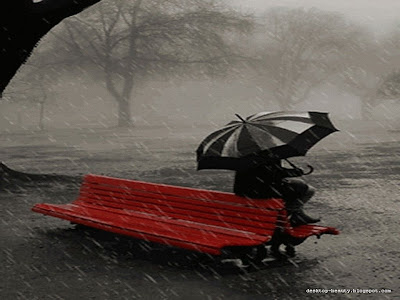Celebreties and their Mothers
Thursday, 30 September 2010
The World Hardest Languages to Learn
The World Hardest Languages to Learn
Learning another language gives the learner the ability to step inside the mind and context of that other culture. Without the ability to communicate and understand a culture on its own terms, true access to that culture is barred. In a world where nations and peoples are ever more dependent upon on another to supply goods and services, solve political disputes, and ensure international security, understanding other cultures is paramount. Lack of intercultural sensitivity can lead to mistrust and misunderstandings, to an inability to cooperate, negotiate, and compromise, and perhaps even to military confrontation.
Extremely Hard: The hardest language to learn is:Polish
Polish
Polish is a West Slavic language and the official language of Poland. Its written standard is the Polish alphabet which corresponds basically to the Latin alphabet with a few additions. Polish-speakers use the language in a uniform manner through most of Poland. It is also used as a second language in some parts of Russia, Lithuania, Belarus, Ukraine and Kazakhstan. This phenomenon is caused by migrations. There are only a few dialects that differ from the standard Polish language, however the differences among them are not significant and mostly based on regional pronunciation and vocabulary changes. The most distinguishable are the dialects of Silesia and Podhale (highlander’s dialect). Worth mentioning is Kashubian – a separate language used by the inhabitants living west of Gdansk near the Baltic Sea. The number of its users is estimated at somewhere between 100,000 and 200,000. Although it is gradually becoming extinct, a lot of effort is being put into saving it and it recently begun to be taught at local schools as a minority language. Polish, like other Indo-European languages, shares some Latin grammar and vocabulary. There are 3 tenses (past, present, future), 2 numbers (singular and plural), and 3 genders (masculine, feminine, neuter). There are no articles but Polish, like Latin, and is an inflectional language that distinguishes 7 cases, defining the noun usage in a sentence. This feature makes our mother tongue difficult to master and presents a lot of trouble to foreigners. The average Polish speaker is fluent in their language not until age 16.
Very Hard: Finnish, Hungarian, and Estonian-These languages are hard because of the countless noun cases. However, the cases are more like English prepositions added to the end of the root.
Finnish
Finnish is one of the official languages of Finland and an official minority language in Sweden. In Sweden, both standard Finnish and Meänkieli, a Finnish dialect, are spoken. The Kven language, which is closely related to Finnish, is an official minority language in Norway. Finnish belongs to the Baltic-Finnic branch of the Finno-Ugric languages, being most closely related to Estonian, Livonian, Votic, Karelian, Veps, and Ingrian. Characteristic phonological features include vowel harmony, in which vowels are divided into two contrasting classes such that vowels from opposing classes may not occur together in a word; and consonant gradation, in which stop consonants (such as p, t, k) are altered before closed syllables (e.g., p is replaced by v, pp by p). There are also two lengths distinguished in vowels and in consonants. Many words have been borrowed from Indo-European languages, particularly from the Baltic languages, German, and Russian. Finnish dialects are divided into two distinct groups, the Western dialects and the Eastern dialects.
Hungarian
Hungarian is a Finno-Ugric language, distantly related to Finnish and Estonian. It is the largest member of the Finno-Ugric family of languages, spoken by about 10 million people in Hungary and 4.5 million in countries adjacent to Hungary and around the world. It is an “agglutinating” language, i.e., a language that uses large numbers of suffixes and post-positions. It belongs to the Finno-Ugric language family, which includes Finnish and Estonian, but its closest relatives are several obscure languages spoken in Siberia. Hungarian is not at all related to the Indo-European languages which surround it, and is very different both in vocabulary and in grammar. Hungarian is an agglutinative language, meaning that it relies heavily on suffixes and prefixes. The grammar is seemingly complex, yet there is no gender, a feature that most English speakers grapple with when learning other European languages. Hungarian is a highly inflected language in which nouns can have up to 238 possible forms. It is related to Mansi, an Ob-Ugric language with about 4,000 speakers who live in the eastern Urals, and Khanty or Ostyak, the other Ob-Ugric language which is spoken by about 15,000 people in the Ob valley of western Siberia.
Estonian
Estonian is the official language of Estonia, spoken by about 1.1 million people in Estonia and tens of thousands in various émigré communities. It is an Uralic language and is closely related to Finnish. Even the most ordinary everyday Estonian language contains numerous ancient expressions, possibly going back as far as the Ice Age. The language occurs in two major dialectal forms, northern and southern; the northern dialect, Tallinn, is used in most of the country and forms the basis of the modern literary language. The southern dialect is found from Tartu southward. Typologically, Estonian represents a transitional form from an agglutinating language to an inflected language. In Estonian nouns and pronouns do not have grammatical gender, but nouns and adjectives are declined in fourteen cases: nominative, genitive, partitive, illative, inessive, elative, allative, adessive, ablative, translative, terminative, essive, abessive, and comitative, with the case and number of the adjective(s) always agreeing with that of the noun. Thus the illative for “a yellow house” (kollane maja) – “into a yellow house” is (kollasesse majasse). The verbal system is characterized by the absence of the future tense (the present tense is used) and by the existence of special forms to express an action performed by an undetermined subject (the “impersonal”).
Pretty Hard: Ukrainian and Russian complex grammar and different alphabet but easier pronunciation.Serbian-Also similar to other Slavic languages with a complex case and gender system, but it also has many tenses. alphabet
Ukrainian
Ukrainian is a language of the East Slavic subgroup of the Slavic languages. It is the official state language of Ukraine. Written Ukrainian uses the Cyrillic alphabet. The alphabet comprises thirty-three letters, representing thirty-eight phonemes (meaningful units of sound), and an additional sign—the apostrophe. Ukrainian orthography is based on the phonemic principle, with one letter generally corresponding to one phoneme, although there are a number of exceptions. The orthography also has cases where the semantic, historical, and morphological principles are applied. The letter ? represents two consonants [?t?]. The combination of [j] with some of the vowels is also represented by a single letter ([ja]=?, [je]=?, [ji]=?, [ju]=?), while [jo]=?? and the rare regional [j?]=?? are written using two letters. These iotated vowel letters and a special soft sign change a preceding consonant from hard to soft. An apostrophe is used to indicate the hardness of the sound in the cases when normally the vowel would change the consonant to soft; in other words, it functions like the yer in the Russian alphabet. A consonant letter is doubled to indicate that the sound is doubled, or long. The phonemes [dz] and [d?] do not have dedicated letters in the alphabet and are rendered with the digraphs ?? and ??, respectively. [dz] is pronounced close to English dz in adze, [d?] is close to g in huge.
Russian
Russian is the most geographically widespread language of Eurasia, the most widely spoken of the Slavic languages, and the largest native language in Europe. Russian belongs to the family of Indo-European languages and is one of three living members of the East Slavic languages, the others being Belarusian and Ukrainian (and possibly Rusyn, normally considered a dialect of Ukrainian). Russian is written using a modified version of the Cyrillic (?????????) alphabet, consisting of 33 letters. Russian spelling is reasonably phonetic in practice. It is in fact a balance among phonetics, morphology, etymology, and grammar, and, like that of most living languages, has its share of inconsistencies and controversial points. The Russian language possesses five vowels, which are written with different letters depending on whether or not the preceding consonant is palatalized. The consonants typically come in plain vs. palatalized pairs, which are traditionally called hard and soft. (The ‘hard’ consonants are often velarized, some dialects only velarize /l/ in such positions). The standard language, based on the Moscow dialect, possesses heavy stress and moderate variation in pitch. Stressed vowels are somewhat lengthened, while unstressed vowels (except /u/) tend to be reduced to an unclear schwa. Russian is notable for its distinction based on palatalization of most of the consonants. The spoken language has been influenced by the literary, but continues to preserve characteristic forms. The dialects show various non-standard grammatical features, some of which are archaisms or descendants of old forms since discarded by the literary language. The total number of words in Russian is difficult to reckon because of the ability to agglutinate and create manifold compounds, diminutives, etc.
Serbian
Serbian is a South Slavic language, spoken chiefly in Serbia, Bosnia and Herzegovina, Montenegro, Croatia, and in the Serbian diaspora. Standard Serbian is based on the Shtokavian dialect, like the modern Croatian and Bosnian, with which it is mutually intelligible, and was previously unified with under the standard known as Serbo-Croatian. Uses primarily Cyrillic, but also the Latin alphabet as well. Serbian verbs are one of the most complicated parts of Serbian grammar (with noun cases, probably, being the hardest). They are inflected for person, number and sometimes gender. Serbian verbs are conjugated in 4 past tenses – perfect, aorist, imperfect, and pluperfect, of which the last two have a very limited use (imperfect is still used in some dialects, but majority of native Serbian speakers consider it archaic); 1 future tense (aka 1st future tense – as opposed to the 2nd future tense or the future exact, which is considered a tense of the conditional mood by some contemporary linguists), and 1 present tense. These are the tenses of the indicative mood. Apart from the indicative mood, there is also the imperative mood. The conditional mood has two more tenses, the 1st conditional (commonly used in conditional clauses, both for possible and impossible conditional clauses), and the 2nd conditional (without use in spoken language – it should be used for impossible conditional clauses). Serbian language has active and passive voice. As for the non-finite verb forms, Serbian language has 1 infinitive, 2 adjectival participles (the active and the passive), and 2 adverbial participles (the present and the past).
Fairly Hard: Chinese and Japanese-No cases, no genders, no tenses, no verb changes, short words, very easy grammar, however, writing is hard. But to speak it is very easy. Also intonations make it harder but certainly not harder than Polish pronunciation. I know a Chinese language teacher that says people pick up Chinese very easy, but he speaks several languages and could not learn Polish. I am learning some Chinese, it is not the hardest language maybe even the easiest language to learn. Not the hardest language by any measure. Try to learn some Chinese and Polish your self and you will see which is the hardest language.
Chinese
Chinese languages – also called Sinitic languages – are a principal language group of eastern Asia which belongs to the Sino-Tibetan language family. All varieties of modern Chinese are analytic languages, in that they depend on syntax (word order and sentence structure) rather than morphology—i.e., changes in form of a word—to indicate the word’s function in a sentence. In other words, Chinese has few grammatical inflections—it possesses no tenses, no voices, no numbers (singular, plural; though there are plural markers, for example for personal pronouns), and only a few articles (i.e., equivalents to “the, a, an” in English). There is, however, a gender difference in the written language (? as “he” and ? as “she”), but it should be noted that this is a relatively new introduction to the Chinese language in the twentieth century. They make heavy use of grammatical particles to indicate aspect and mood. In Mandarin Chinese, this involves the use of particles like le ?, hai ?, yijing ??, etc. Other notable grammatical features common to all the spoken varieties of Chinese include the use of serial verb construction, pronoun dropping and the related subject dropping.
Japanese
Japanese is believed to be linked to the Altaic language family, which includes Turkish, Mongolian and other languages, but also shows similarities to Austronesian languages like Polynesian. The Japanese writing system consists of three different character sets: Kanji (several thousands of Chinese characters) and Hiragana and Katakana (two syllabaries of 46 characters each; together called Kana). Japanese texts can be written in two ways: In Western style, i.e. in horizontal rows from the top to the bottom of the page, or in traditional Japanese style, i.e. in vertical columns from the right to the left side of the page. Both writing styles exist side by side today. Basic Japanese grammar is relatively simple. Complicating factors such as gender articles and distinctions between plural and singular are missing almost completely. Conjugation rules for verbs and adjectives are simple and almost free of exceptions. Nouns are not declinated at all, but appear always in the same form. The biggest difficulty are accents, which do exist, but to a much lower extent than in the Chinese language. In addition, there are relatively many homonyms, i.e. words that are pronounced the same way, but have different meanings.
Average: French-lots of tenses but not used and moderate grammar.
French
French is a Romance language globally spoken by about 77 million people as a first language (mother tongue), by 50 million as a second language, and by about another 200 million people as an acquired foreign language, with significant speakers in 57 countries. French is a moderately inflected language. Nouns and most pronouns are inflected for number (singular or plural); adjectives, for the number and gender (masculine or feminine) of their nouns; personal pronouns, for person, number, gender, and case; and verbs, for mood, tense, and the person and number of their subjects. French has a grammar similar to that of the other Romance languages. The French grammar provides definitions and links to further information about each of the French verb tenses, pronouns, and other grammatical structures.
Basic to hard: English, no cases or gender, you hear it everywhere, spelling can be hard and British tenses you can use the simple and continues tense instead of the perfect tenses and you will speak American English. English at the basic level is easy but to speak it like a native it’s hard because of the dynamic idiomatic nature.
English
English is a West Germanic language that developed in England during the Anglo-Saxon era. English grammar has minimal inflection compared with most other Indo-European languages. For example, Modern English, unlike Modern German or Dutch and the Romance languages, lacks grammatical gender and adjectival agreement. Case marking has almost disappeared from the language and mainly survives in pronouns. At the same time, the language has become more analytic, and has developed features such as modal verbs and word order as resources for conveying meaning. Auxiliary verbs mark constructions such as questions, negative polarity, the passive voice and progressive aspect.
10 Things Science Can’t Explain
10 Things Science Can’t Explain
Science can’t explain all. But just because these things are yet to be explained, doesn’t mean science ‘cant’ explain them.
The WOW! signal
Wow, a secret message from outer space! Twenty years on and still no nearer an answer.
Wow, a secret message from outer space! Twenty years on and still no nearer an answer.
Pioneer’s Funky Voyage
The creators of these deviant probes are ripping their hair out trying to understand what went wrong.
The creators of these deviant probes are ripping their hair out trying to understand what went wrong.
Female Orgasms
After a whole lot of thinking, biology’s best minds are still confused.
After a whole lot of thinking, biology’s best minds are still confused.
Dark Energy
The universe is a dark, dark place, which makes it ruddy difficult to study.
The universe is a dark, dark place, which makes it ruddy difficult to study.
The Speed of Light
Faster than a speeding photon: is it possible? Einstein stays no, but does everyone else?
Faster than a speeding photon: is it possible? Einstein stays no, but does everyone else?
The Placebo Effect
Take this pill and you’ll be cured, just as long as you believe me.
Take this pill and you’ll be cured, just as long as you believe me.
Cold Fusion
Can atoms get together and let off some steam without the sauna?
Can atoms get together and let off some steam without the sauna?
Yawning
Open your mouth and notice the shockingly fascinating mystery of the yawn.
Open your mouth and notice the shockingly fascinating mystery of the yawn.
Dark Matter
Just because you can’t see the WIMPs and MACHOs doesn’t mean they aren’t there.
Just because you can’t see the WIMPs and MACHOs doesn’t mean they aren’t there.
Rain a season a moment when everyone from animals to plants and we humans are overjoyed. The nature's beauty is at its zenith here are some beautiful wallpapers from the rainy season. Charlie Chaplin says about rain. "I always like walking in the rain, so no one can see me crying."
Tears of joy are like the summer rain drops pierced by sunbeams.
Labels:
Amazing,
Photography,
wallpapers
Women’s Faces and Their Meanings
Guys, there is your chance to solve unsolvable enigma called women. I am already using this “user manual” for my wife. ;)
1. Contempt:
lifted brows, upper lip lifted. How to cause this: it’s enough just to wipe the sweat off your head with a tip of your tie.
lifted brows, upper lip lifted. How to cause this: it’s enough just to wipe the sweat off your head with a tip of your tie.
2. Controlled anger:
tightly shut lips, flared nostrils, eyes squinting slightly. How to cause this: find a photo album with your ex-wife photos and put it in a prominent place.
tightly shut lips, flared nostrils, eyes squinting slightly. How to cause this: find a photo album with your ex-wife photos and put it in a prominent place.
3. Fear:
eyes open wide, eyebrows slightly raised comers of the mouth are pointing downward. How to cause this: pick up the phone and say: “Hey Wolfgang! I heard you and your brothers have no place to live? Well, come live with us!”
eyes open wide, eyebrows slightly raised comers of the mouth are pointing downward. How to cause this: pick up the phone and say: “Hey Wolfgang! I heard you and your brothers have no place to live? Well, come live with us!”
4. Sarcastic Smile:
mouth half-open, eyes slightly squinting. How to cause this: going out with your buddies, promise to be home at 9 pm.
mouth half-open, eyes slightly squinting. How to cause this: going out with your buddies, promise to be home at 9 pm.
5. Obligatory Smile:
mouth corners are pointing in different directions, in a lopsided smile. How to cause this: invite your boss to visit your house.
mouth corners are pointing in different directions, in a lopsided smile. How to cause this: invite your boss to visit your house.
6. Derision:
lips shut, eyes squinting. How to cause this: refuse to pay extra $100 for a hotel room with a better view.
lips shut, eyes squinting. How to cause this: refuse to pay extra $100 for a hotel room with a better view.
7. Asking nicely:
lifted eyebrows, trembling chin. How to cause this: promise something, then change your mind.
lifted eyebrows, trembling chin. How to cause this: promise something, then change your mind.
8. Pleading:
wrinkled forehead, lips slightly open, eyes wet. How to cause this: Again promise her something, (see previous), and then change your mind again.
wrinkled forehead, lips slightly open, eyes wet. How to cause this: Again promise her something, (see previous), and then change your mind again.
9. Baffled Anger:
one eye squinted, jaw put forward. How to cause this: when you team wins, go to bed dressed in it’s colors.
one eye squinted, jaw put forward. How to cause this: when you team wins, go to bed dressed in it’s colors.
10. Confusion:
eyes open wide, mouth slightly open. How to cause this: get a tattoo with a different girl’s name.
eyes open wide, mouth slightly open. How to cause this: get a tattoo with a different girl’s name.
11. Deep Hatred:
all face muscles are frozen as in a mask. How to cause this: Say that her new dress is good, but your secretary’s dress is better.
all face muscles are frozen as in a mask. How to cause this: Say that her new dress is good, but your secretary’s dress is better.
12. Humble Submission:
mouth is closed, one eyebrow slightly raised. How to cause this: as yet unknown.
mouth is closed, one eyebrow slightly raised. How to cause this: as yet unknown.
Subscribe to:
Comments (Atom)
































